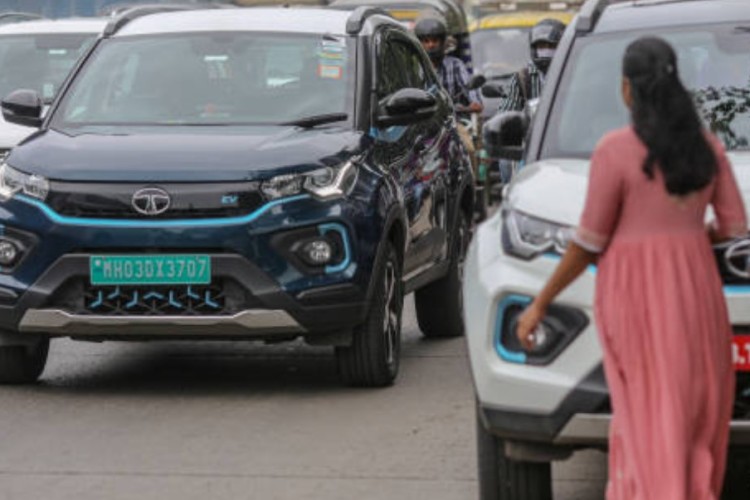Trends in India’s car market: Despite economic uncertainties, India is experiencing a striking shift in consumption patterns, driven by rising aspirations and a growing appetite for premium products. From high-end apartments to luxury biscuits and pricier cars, the country’s affluent consumers are showing little hesitation in spending. Nowhere is this trend more apparent than in the automobile sector, particularly in the robust demand for sports utility vehicles.
While automakers have expressed concerns about sluggish overall demand in recent months, April brought a measure of relief. Domestic passenger vehicle sales touched 353,000 units, marking a 4.4% year-on-year rise, buoyed primarily by the surging popularity of SUVs and stronger rural demand.
READ | India’s electronics manufacturing push needs policy stability
SUV sales drive momentum
The SUV segment now accounts for 55% of all PV sales in India, up from just under 50% in 2023, according to data from the Society of Indian Automobile Manufacturers (SIAM). Mahindra & Mahindra was among the biggest gainers in April 2025, climbing to the position of second-largest carmaker with sales of 52,330 units—a remarkable 27.6% year-on-year jump. The success of models like the Thar and XUV700 helped M&M overtake Hyundai and Tata Motors during the month.
Toyota Kirloskar Motor also capitalised on the SUV trend, recording a 32.8% annual growth to 24,833 units. Its Urban Cruiser Hyryder has strengthened its position in both urban and semi-urban markets, reflecting broader consumer preferences shifting toward larger and more feature-rich vehicles.
Analysts note that this SUV surge reflects deeper structural trends—namely, increasing disposable incomes, even in rural regions, and a growing preference for premium products. The average sale price of vehicles rose to Rs 11.5 lakh in FY24, a 50% increase over five years. Yet, this aspirational upswing coexists uneasily with concerns about affordability, as inflation and high interest rates weigh heavily on many consumers.
Car market leaders under pressure
Not all automakers have benefited equally from the SUV-led boom. Maruti Suzuki, India’s market leader with a 41.6% share in 2023, saw only a marginal 0.5% year-on-year rise in April sales, reaching 138,704 units. Company officials blamed the muted performance on a challenging macro environment and a dearth of new model launches. Maruti’s reliance on hatchbacks and sedans—segments increasingly overshadowed by SUVs—has dented its competitiveness. A strategic shift toward more SUV offerings could prove pivotal.
Hyundai and Tata Motors also witnessed disappointing numbers. Hyundai’s April sales fell 11.6% to 44,374 units, while Tata’s dropped 5.6% to 45,199 units. Hyundai attributed the slowdown to macroeconomic challenges such as rising interest rates, fuel prices, and input costs. However, it found some solace in exports, which rose by 21.5% year-on-year. Tata Motors, meanwhile, remains dominant in the electric vehicle space with a 70% share but struggled in the internal combustion engine segment, reflecting a broader consumer tilt toward premium and electrified vehicles.
EVs gain ground, but hurdles remain
India’s transition to green mobility is gaining traction, though it remains at an early stage. In FY25, total EV sales reached 1.97 million units, with electric PV registrations crossing the 100,000 mark—a robust 18.2% year-on-year increase, according to SIAM’s VAHAN data. Tata Motors leads the charge with the Nexon EV, while Maruti Suzuki is preparing to launch its much-anticipated eVITARA in 2025.
Policy support has been a key driver. Government incentives such as the ₹5,790 crore FAME-II scheme and a reduced 5% GST on EVs have bolstered uptake. Still, EVs accounted for just 7.5% of total vehicle sales in 2024, far below the target of 30% by 2030. High upfront costs, patchy charging infrastructure, and persistent consumer scepticism continue to hamper mass adoption.
PV sales reflect broader economic fault lines
Passenger vehicle sales are increasingly seen as a proxy for broader economic trends—and the current data reveals a mixed picture. While surging SUV sales and rural consumption point to a burgeoning consumer class, the sector’s overall growth has slowed to just 2% in FY25, down from 8.45% the previous year. Inventory build-up—estimated at 650,000 units in December 2024—signals slackening demand in urban markets.
Much like trends in the FMCG sector, premium products continue to find buyers, but lower-income consumers are being left behind. Interestingly, the traditional urban-rural consumption divide appears to be inverting. Rural markets are showing greater resilience and optimism, while urban buyers, grappling with rising living costs, are becoming more cautious. This divergence underscores the uneven nature of India’s post-pandemic recovery.
Path forward for India’s auto sector
A KPMG report, Automotive Pulse India 2024, highlights the crucial role of regional manufacturing clusters—across the North, South, East, and West—in driving growth. India’s ambition to become the world’s leading car manufacturer by 2029 is bolstered by robust M&A activity and rising private equity investment.
Currently the world’s third-largest automobile manufacturer after China and the US, India stands on the cusp of transformation. Global investors see it as a viable alternative to China, with the domestic auto sector projected to hit $1 trillion by 2035.
According to The Economic Times, India’s PV market is forecast to grow by 5% in 2025 and could reach $133.8 billion by 2033. But these targets will depend heavily on sustained policy support and the ability to bridge socio-economic divides. Strengthening related sectors—such as semiconductors, green hydrogen, oil and gas, and tyres—will be crucial to building a globally competitive auto ecosystem.
Moreover, the industry must prioritise research and development in frontier technologies, including hydrogen fuel cells and Advanced Driver Assistance Systems (ADAS), to stay competitive with global peers. With the right mix of innovation, investment, and policy vision, India’s automotive sector can not only ride the wave of domestic consumption but also emerge as a formidable force in the global market.

